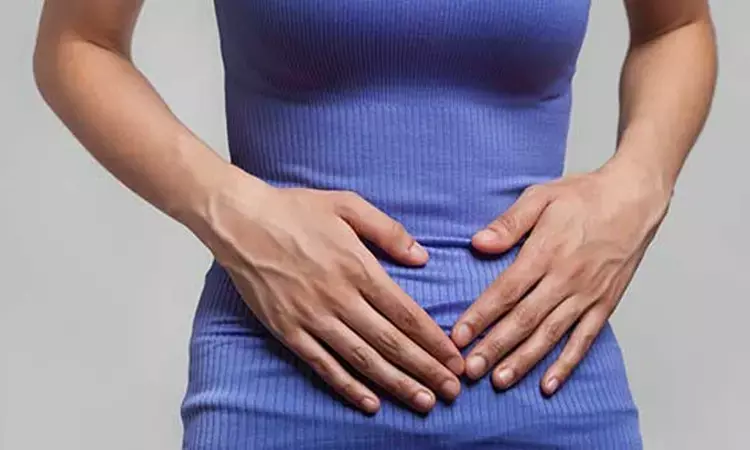- Home
- Medical news & Guidelines
- Anesthesiology
- Cardiology and CTVS
- Critical Care
- Dentistry
- Dermatology
- Diabetes and Endocrinology
- ENT
- Gastroenterology
- Medicine
- Nephrology
- Neurology
- Obstretics-Gynaecology
- Oncology
- Ophthalmology
- Orthopaedics
- Pediatrics-Neonatology
- Psychiatry
- Pulmonology
- Radiology
- Surgery
- Urology
- Laboratory Medicine
- Diet
- Nursing
- Paramedical
- Physiotherapy
- Health news
- Fact Check
- Bone Health Fact Check
- Brain Health Fact Check
- Cancer Related Fact Check
- Child Care Fact Check
- Dental and oral health fact check
- Diabetes and metabolic health fact check
- Diet and Nutrition Fact Check
- Eye and ENT Care Fact Check
- Fitness fact check
- Gut health fact check
- Heart health fact check
- Kidney health fact check
- Medical education fact check
- Men's health fact check
- Respiratory fact check
- Skin and hair care fact check
- Vaccine and Immunization fact check
- Women's health fact check
- AYUSH
- State News
- Andaman and Nicobar Islands
- Andhra Pradesh
- Arunachal Pradesh
- Assam
- Bihar
- Chandigarh
- Chattisgarh
- Dadra and Nagar Haveli
- Daman and Diu
- Delhi
- Goa
- Gujarat
- Haryana
- Himachal Pradesh
- Jammu & Kashmir
- Jharkhand
- Karnataka
- Kerala
- Ladakh
- Lakshadweep
- Madhya Pradesh
- Maharashtra
- Manipur
- Meghalaya
- Mizoram
- Nagaland
- Odisha
- Puducherry
- Punjab
- Rajasthan
- Sikkim
- Tamil Nadu
- Telangana
- Tripura
- Uttar Pradesh
- Uttrakhand
- West Bengal
- Medical Education
- Industry
Er-YAG Laser Therapy Shows No Significant Benefit for Treating Female Stress Urinary Incontinence: Study

Canada: A recent double-blinded randomized controlled trial published in the American Journal of Obstetrics and Gynecology has explored the effectiveness of Erbium-YAG (Er-YAG) laser vaginal treatment in managing female stress urinary incontinence (SUI).
The researchers found that Er-YAG laser vaginal treatment was not more effective than the sham procedure in curing or improving female stress urinary incontinence after six months. Despite initial hopes that the laser treatment would offer a non-invasive, quick, and effective alternative for managing SUI, the results indicate that it does not provide the expected relief for most patients.
Stress urinary incontinence is a common condition that affects millions of women worldwide, often triggered by physical exertion, sneezing, coughing, or other forms of pressure on the bladder. SUI affects around 40% of adult women and is commonly treated with surgical interventions. While minimally invasive laser vaginal therapy has become increasingly available as a potential treatment, its effectiveness remains uncertain. With this in mind, Patricia LEE, Division of Urogynecology, Dept of Obstetrics and Gynecology, Sunnybrook Health Sciences Centre, University of Toronto, Toronto, Ontario, Canada, and colleagues aimed to evaluate the efficacy of Erbium-Yttrium Aluminum Garnet (Er-YAG) laser therapy as a treatment for stress urinary incontinence.
For this purpose, the researchers conducted a randomized, sham-controlled, double-blinded trial with follow-ups at 6 weeks and 6 months in a single tertiary hospital setting, involving 144 adult women with symptomatic stress urinary incontinence. Participants received two vaginal laser treatments spaced 6 weeks apart and were randomly assigned to either the laser or sham group.
The primary outcome was determined by patients’ self-reported absence of urinary incontinence 6 months after treatment, assessed through question 3 of the International Consultation on Incontinence Questionnaire-Short Form. Secondary outcomes included objective urine loss measurements using 24-hour pad tests, responses to three incontinence symptom questionnaires (Urogenital Distress Inventory-6, Incontinence Impact Questionnaire-7, and International Consultation on Incontinence Questionnaire-Short Form), a quality of life assessment using the King’s Health Questionnaire, and a sexual function evaluation via the Pelvic Organ Prolapse/Urinary Incontinence Sexual Questionnaire.
The following were the key findings of the study:
• Out of 263 individuals approached, 76 were randomized to the laser treatment group and 68 to the sham treatment group.
• There was no difference in the reported cure rate between the two groups at the 6-month follow-up, which was the primary outcome:
• Laser group: 0.013 (1/76).
• Sham group: 0/68.
• There was a statistically significant difference at 6 weeks in 1 of the three incontinence questionnaires and 3 of the nine domains of the quality-of-life questionnaire.
• There were no other significant differences in either subjective or objective measures between the two groups at 6 weeks or 6 months post-treatment.
"After six months, the findings showed that the Er-YAG laser vaginal treatment was not more effective than the sham procedure in curing or significantly improving symptoms of stress urinary incontinence," the researchers concluded.
Reference:
LEE, P., PERRUZZA, D., EDELL, H., JARVI, S., KIM, K., SULTANA, R., ALAVI, N., KISS, A., CAO, X., GAGNON, L., BODLEY, J., CARR, L., HERSCHORN, S., & KUNG, R. (2024). Double-blinded randomized controlled trial of Erbium-YAG Laser to treat Female Stress Urinary Incontinence. American Journal of Obstetrics and Gynecology. https://doi.org/10.1016/j.ajog.2024.11.021
Dr Kamal Kant Kohli-MBBS, DTCD- a chest specialist with more than 30 years of practice and a flair for writing clinical articles, Dr Kamal Kant Kohli joined Medical Dialogues as a Chief Editor of Medical News. Besides writing articles, as an editor, he proofreads and verifies all the medical content published on Medical Dialogues including those coming from journals, studies,medical conferences,guidelines etc. Email: drkohli@medicaldialogues.in. Contact no. 011-43720751


